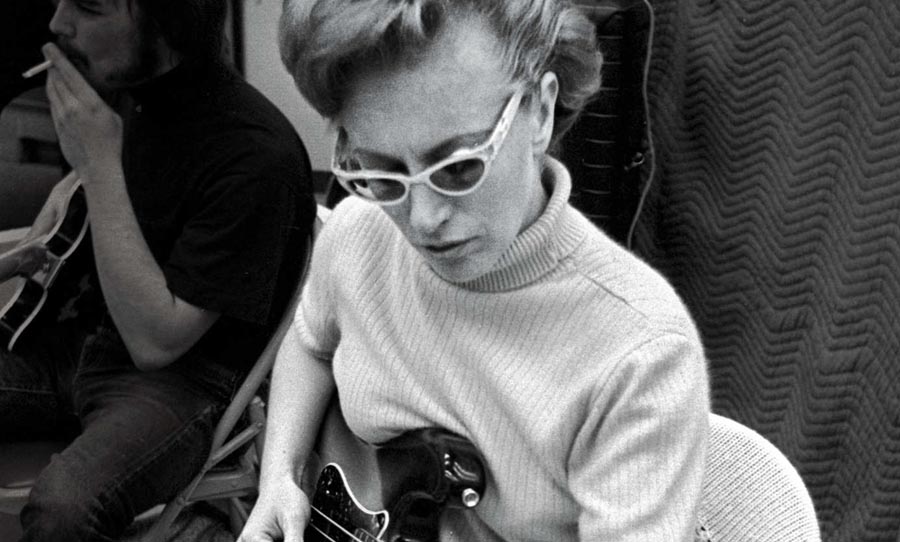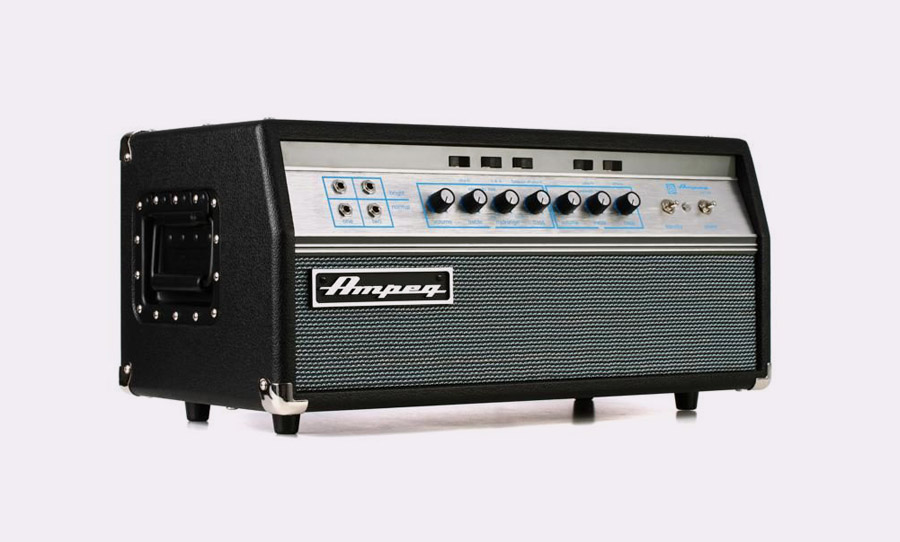The history of music gear is littered with firsts. Some innovations, like those from the minds of Leo Fender and Les Paul are well documented. As is the race between Bob Moog and Alan R Pearlman in the development of modular synthesis – with Moog changing the game with the first commercially available portable synth – the Minimoog Model D. The bass guitar made waves in the ’50s and ’60s too – but how could it be heard? The Ampeg B-15 would give voice to this new-fangled four-string wonder, giving it enough power to cut a groove through any mix.
The Ampeg B-15 gave voice to the bass guitar, providing the foundation for the unforgettable grooves of Motown. Read on as we explore this amplification marvel.
Born in the Big Apple
The B-15 is responsible for putting out some of the most magical bass tones in the history of modern music, so it stands to reason that it came from the mind of a bass player: Jess Oliver. Oliver served in World War II, playing bass in the army band. On a fateful New York City day, he visited a shop looking for an amplified peg (or “Amp-peg” – get it?) to give his double bass more volume for the stage.
After striking up a rapport with Everett Hull, the proprietor of the fledgling Ampeg, he was employed by the company in 1956. In the following years, Oliver set about studying amplifier design and technology, eventually inventing and patenting the B-15 in 1960. This was a rich period of innovation for the company, with the Reverbrocket – the first time a spring reverb tank had been installed in guitar combo amplifier – following shortly afterwards in 1961.
You might be forgiven for thinking that the B-15 was the first bass amp on the block. In fact, guitarists and bass players have been plugging in – in one way or another – since the 1920s. The physics of the double bass meant that was exceedingly difficult to hear over the rest of the band, therefore, amplification was in demand.
A Gamechanging Design
The B-15’s breakthrough was in its level of sophistication, tonal controls, transportability and ability to reproduce frequencies at the bottom end of the frequency spectrum. It was subtitled the Portaflex, which is a portmanteau of portable and reflex – referring to the ported design of the speaker cabinet, which enhances bass frequencies.
The patented double baffle design was also an important contribution to the success of the B-15. The 15 inch driver was placed between two baffles that were separated by 3/8 of an inch. The inner baffle featured eight rectangular ports. The holes were the passage for the rear output of the speaker. The outer baffle was had the 15 inch hole for the front of the driver. Effectively, there are two signals – one from the front of the speaker, one from the rear – that coalesce in phase with each other.
Adding to the novelty of this new design was the fact that the amp head could be flipped and be stored within the speaker enclosure for easy storage and transport. It was an all tube affair, comprised of three 6SL7 preamp tubes and two 6L6GC power tubes.
Most amps until then had only provided a primitive level of control. In contrast, the B-15 offered up two channels, with independent volume controls and bass and treble EQ settings. Nowadays, this would be regarded as modest, yet at the time, this configuration yielded a newfound level of tweakability that bassists would surely have welcomed.
The King of the Studio
The reputation of the amp caught on rapidly throughout the States. Owing perhaps to Ampeg’s long standing reputation in the New York live music scene, every club and studio in the Big Apple was equipped with a B-15. It was the first choice in the burgeoning studio scene in LA, where it was favoured by the Wrecking Crew legend, Carol Kaye.
It made its way down South to Stax records, where it appeared on any number of sessions in the capable hands of Donald “Duck” Dunn. It’s most enduring endorsement however came courtesy of James Jamerson, who holds a near mythical position in bass folklore due to his incredibly infectious grooves on dozens of Motown hits.
Coupled with a Fender Precision Bass and set up with flatwound strings, it’s possible to conjure up that Jamerson tone (sure it’s “possible” but no one can actually play like Jamerson). For many of the Motown bass recordings, a DI was used, however, like almost everyone else at the time, it was his amp of choice for making sure his unique voice was heard at the gig.
As those gigs got big and bigger, would that dainty 25 watts of power be enough to shake a venue to the core? Unlikely. The B-15 was the machine that elevated the art of electric bass, but Ampeg knew they would need a lot more power if they were to rock the age of Woodstock. The Ampeg SVT arrived in 1969, providing a face-melting 300 watts of all-valve power. 
A Second Life
This new line of Ampeg amps spelled the end of B-15, but Ampeg have since given the classic a new life, with a new and diverse range of Portaflex amps and cabinets. There are originals that still exist, yet as with most vintage gear of this era, they can command quite a high price. There are a few plugins of note from UAD and IK Multimedia that provide a simulated software versions of this most coveted of bass tones.
As is often the case when recording bass, DI is preferred to tracking with a loud cabinet. The Sansamp Bass Driver DI has become a classic in its own right – providing a no-nonsense way to dial in the customarily warm and characterful tones of those Ampeg tubes.
In the hierarchy of prestige, the humble bass amp might seem insignificant to some. And yes, of course, the machine is nothing without the virtuosic players that infused them with life. Yet with the arrival of the Ampeg B-15, bass went from being heard to becoming a force to be reckoned with.


